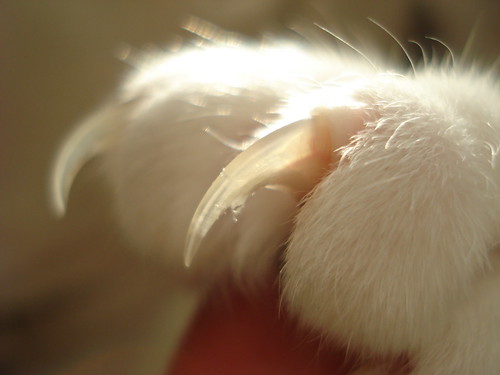It's bound to happen if you're out and about. You are going to find a baby bird in a low branch or on the ground. Wondering what can be done when you find one or more is a question veterinarians often get every Spring. Many baby birds are thought to be abandoned when someone finds them in their yard, but the truth is few young birds just fall from their nest unless a storm has occurred.
If you find a young bird and it is injured, seek medical care immediately from a veterinarian who sees birds. If it is uninjured, you will need to determine whether or not it is really an orphaned bird. The best way is to determine if it is a nestling or a fledgling. Most young birds that are found are really just young fledglings that can't fly well yet. Many people don't realize that when birds leave the nest they jump and glide between tree branches while learning the basics of flying. In order to determine whether the bird is a nestling or a fledgling allow the baby bird to perch on your finger. If it is able to grip your finger firmly then it is a fledgling. The best thing to do in this case is to place it in a nearby tree or shrub and leave it alone. The parents will continue to care for it and feed it.
If the bird is not able to cling to your finger, then it’s a nestling. Try to locate the nest. Most of the time, the nest will be close by and well hidden. Place the bird back in the nest. If the nest cannot be found or is too high for you to safely reach it, make a temporary nest (example- a berry container with tissues inside it) and attach it to a nearby tree or in a shrub to protect it from predators. Place the young bird in the basket and leave it alone. The parents will take care of it once you leave. It is a myth that once you touch a baby bird the adult birds will abandon it.
Should you attempt to hand-feed nestling birds that you have found? Young birds are fed by their parents about every 20 minutes during daylight hours. Most people are not able to provide this much time and effort in raising young birds. You also need to have some education in what is the proper diet to feed nestlings, and then as they grow their diets often change. Never force water or other liquids down their throats; you will actually drown the bird. The adults do not bring water to the nest. Water comes from the insects or fruit they eat. Instead, contact your local veterinarian or call your nearest wildlife rehabilitator. You can find them on the internet. Also you usually have to be licensed to hold wild birds and other wildlife in captivity.
Written by Dr. Dana Lewis
Read more or contact Dr. Dana:
 Dana Lewis, DVM
Dana Lewis, DVMLap of Love Veterinary Hospice
Raleigh, North Carolina
drdana@lapoflove.com | www.lapoflove.com
Dr. Dana assists families with Pet Hospice and Euthanasia in the Raleigh North Carolina area (Raleigh, Durham, Chapel Hill and the greater Triangle, as well as Wake, Durham, Orange, and Chatham counties.











